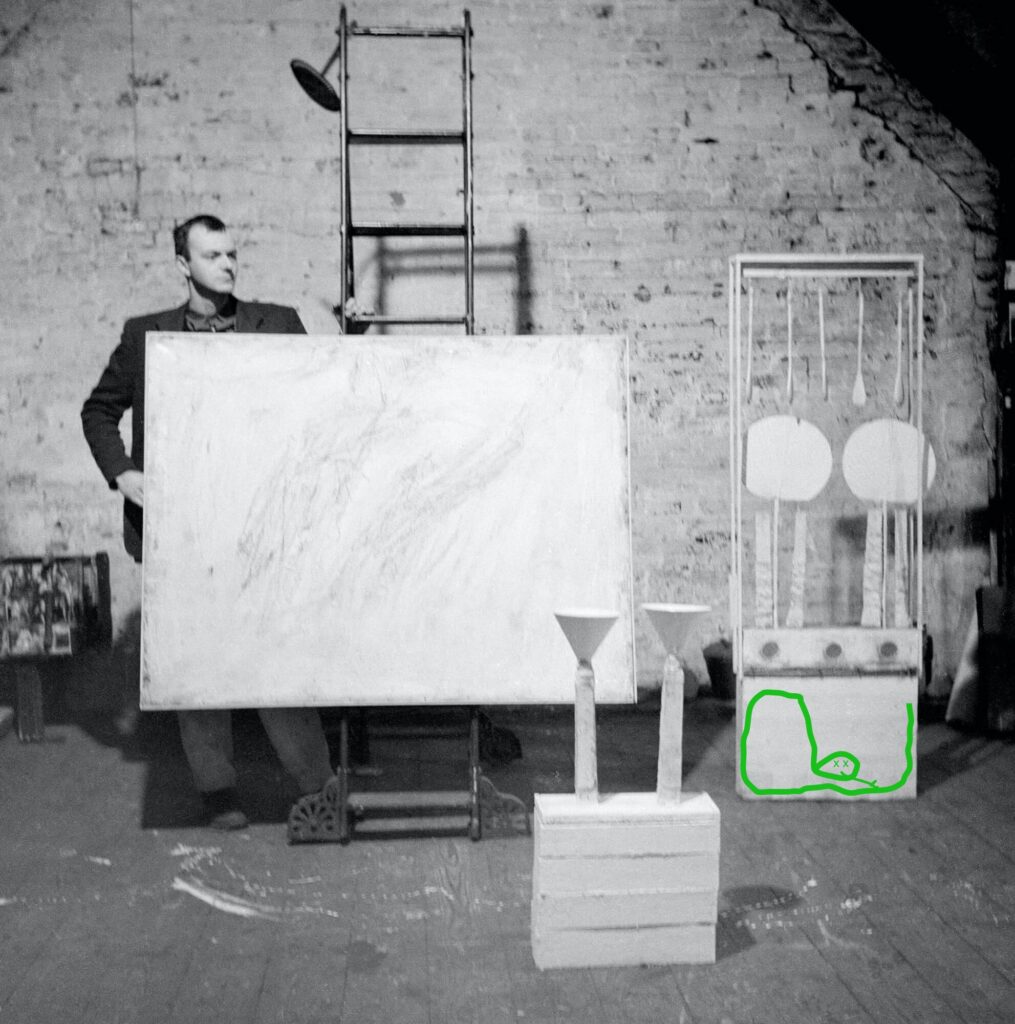
In Spring 1953, after our boys got back from Morocco and Italy, Robert Rauschenberg and Cy Twombly set up a little place on Fulton Street. They spend a year making work and posing for each other. In 1954 Rauschenberg took several photos of Twombly with his paintings and sculptures, almost all of which are lost or destroyed, except for one, the one on the right, above, with the fans, Untitled (Funerary Box for a Lime Green Python).
Claudio Santambrogio emailed a funny reminder of it after seeing the Underground Projection Room For Snakes study I posted last night. So I made a little rendering of what it might be like for the python (RIP).
In 2008 Karen Nesin presented a close reading of this Twombly sculpture at the Tate Modern symposium [as well as additional 1954 photos]. She notes that the title and the work itself are both unstable. The sculpture now known as Untitled (Funerary Box for a Lime Green Python), which remained in Twombly’s collection and is now a promised gift to MoMA, was shown as Untitled in Kirk Varnedoe’s 1994 retrospective. When and how the title came to be is unclear. She graciously considers it might be a misnomer. In a note, Varnedoe says Heiner Bastian said Twombly told him the fans reminded him of hooded cobras. For my part, the vividness of a lime green python seems hard to confuse for a cobra, so this feels like a retcon, or at least an additive, not supplanting, reference.
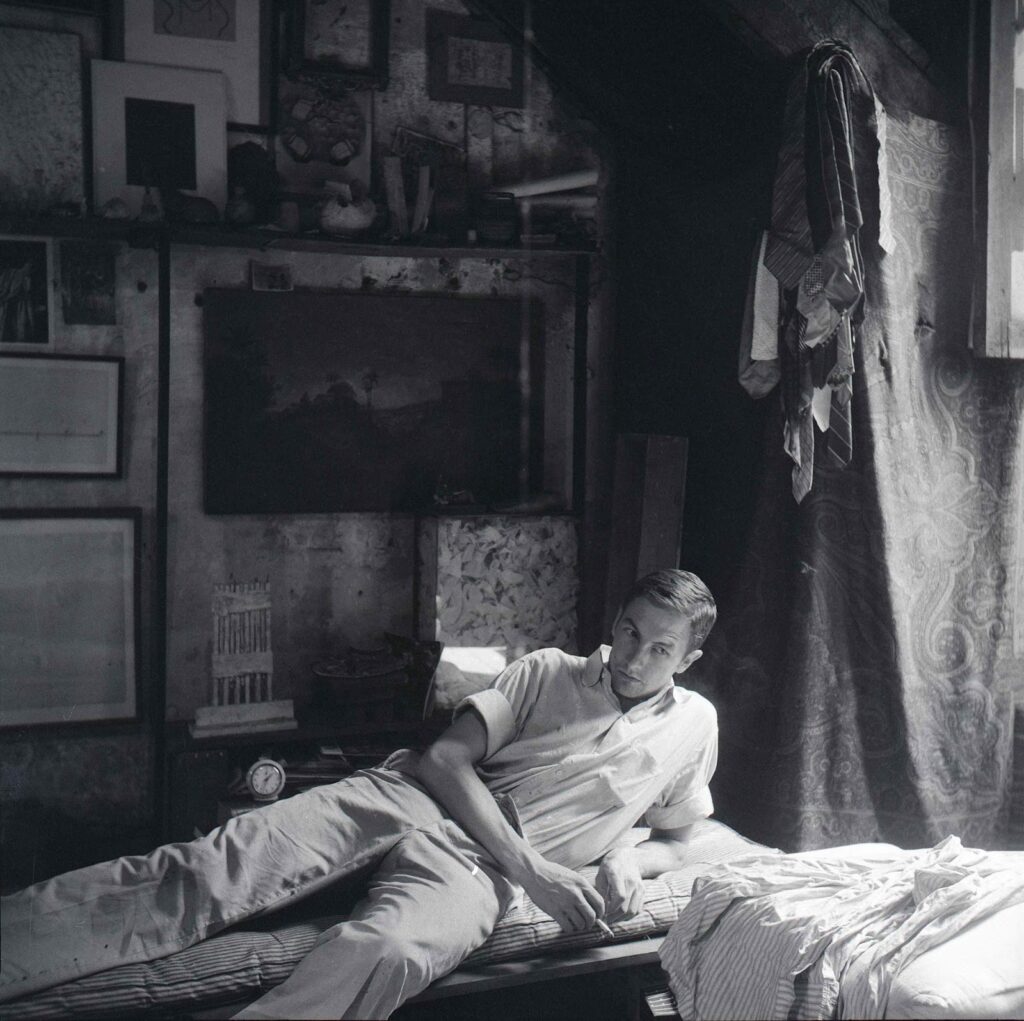
Twombly also said that the spoons dangling from the wooden frame were cut down for use in the pan pipe sculpture he gave to Rauschenberg (above). Except that is dated 1953. [This has been discussed.] Varnedoe notes that the three round mirrors which were removed, along with with the superstructure, from Funerary Box, recall North African fetish and decorative designs. They also appear in another Twombly 1954 sculpture now at the Menil—and in Rauschenberg’s sculptures of the time.
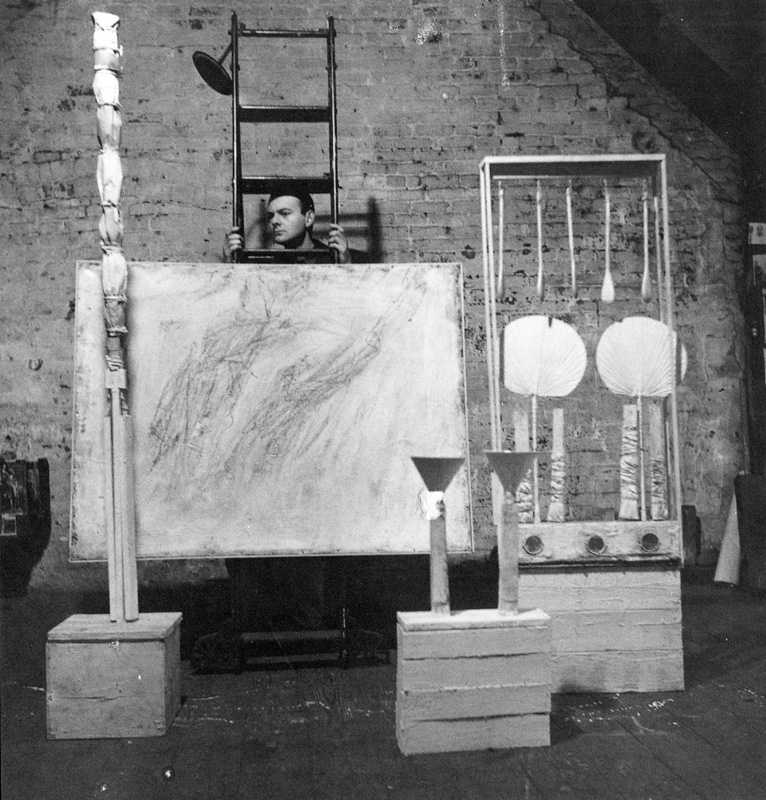
Wait, Varnedoe notes the mirrors, but not the structure or changes. In fact, the work he’s talking about isn’t even in these photos: “The twin palm-leaf fans on block pedestals in two of the photographed works, and in one surviving from the same period (pl. 25)” Were there three? Varnedoe did have a date of 1955 on his Untitled, but that’s now gone back to 1954.
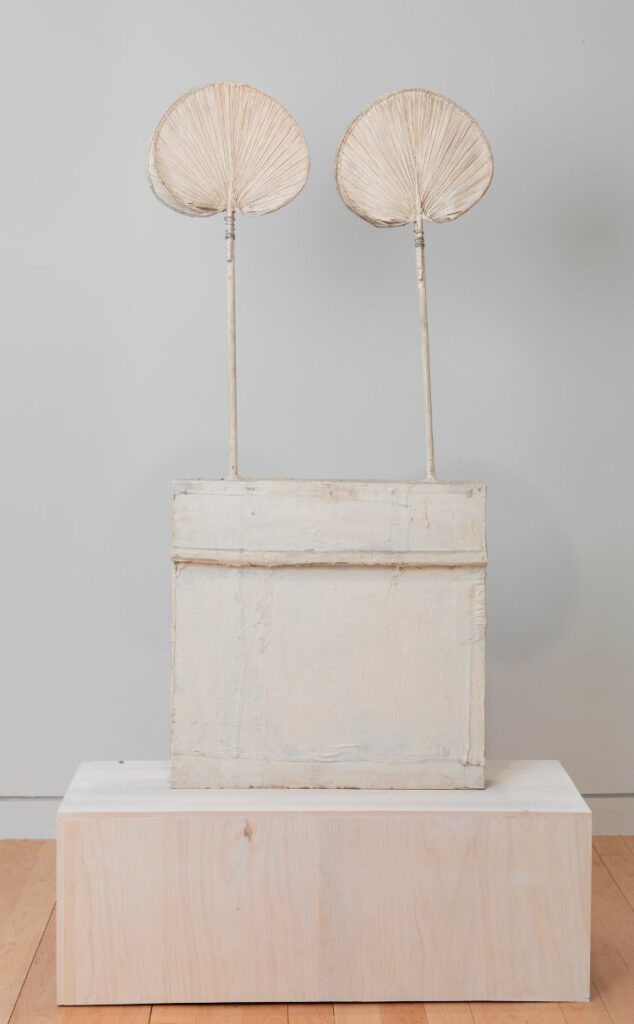
Even taking the cloth layer into account, the horizontal boards on the funerary box base do seem different, and Nesin noted other change in materials over the years (e.g., fans held in place by twine vs wire). The Kravises bought Funerary Box from Twombly and promised it to MoMA, where it was on view when he passed away in 2011. Here’s the verso, btw, which is cleaner than anything ever seen on Fulton Street. I guess during the six decades Twombly lived with it, he made some adjustments. Maybe this is the Funerary Box of Theseus situation.
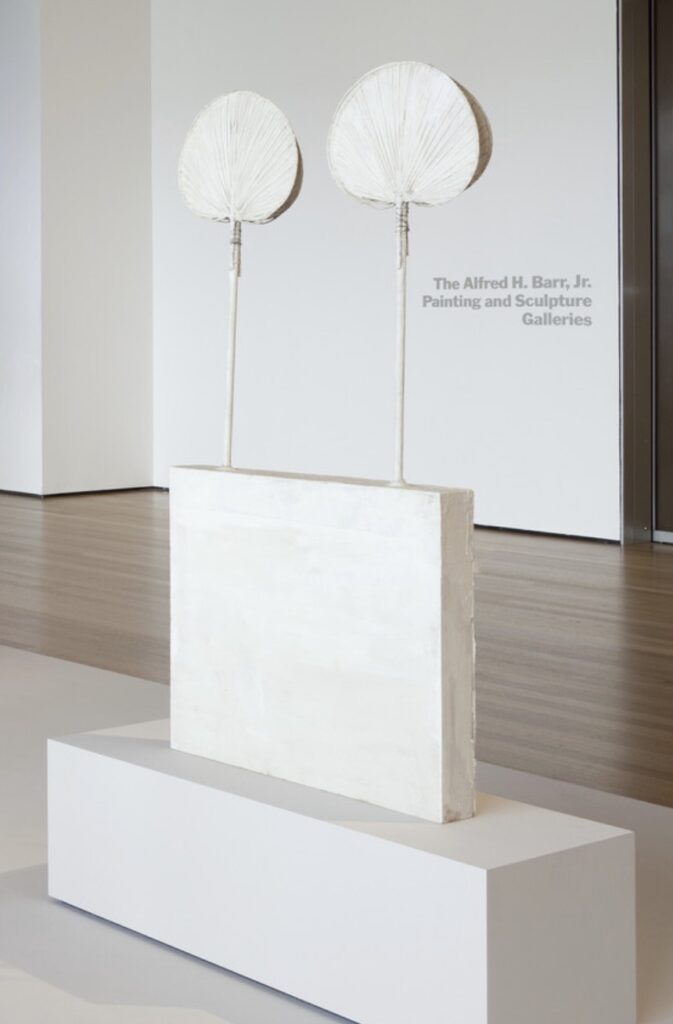
Untitled (Funerary Box for a Lime Green Python), 1954, verso, as installed at MoMA in 2011
Both Nesin and Varnedoe include this image (below), which I love, and wish I could have drawn a suitable lime green python on, if only the funerary box was more visible. But small price to pay to see Twombly hugging another funerary box with the face covered in his marks.
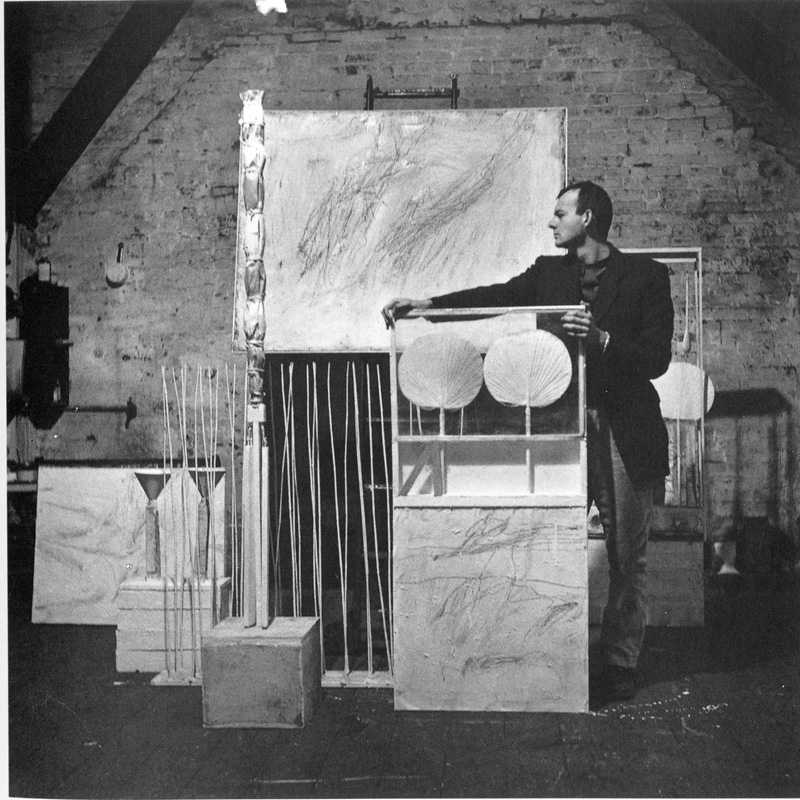
Have Twombly’s sculpture and painting practices ever been so fused together as they were in this one destroyed work? If you count the way he painted all his sculptures, they never diverged. Varnedoe called the Twombly works photographed by Rauschenberg in his/their studio “experimental ‘combines’.” Their passionate discussions about the union of painting and sculpture must have kept them up late every night.
